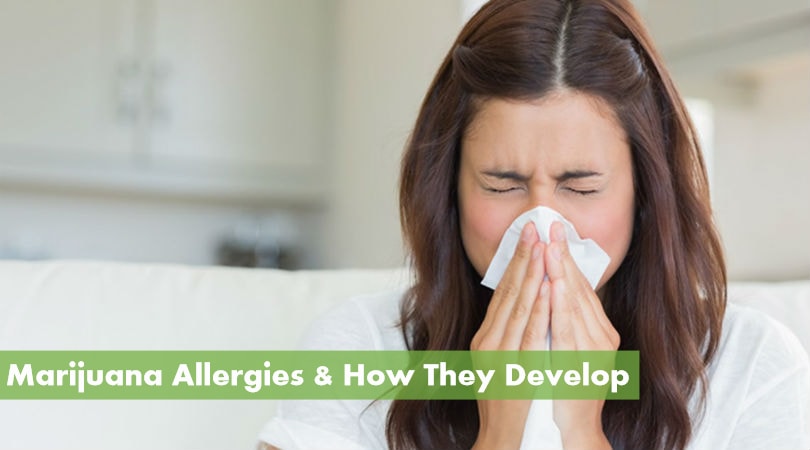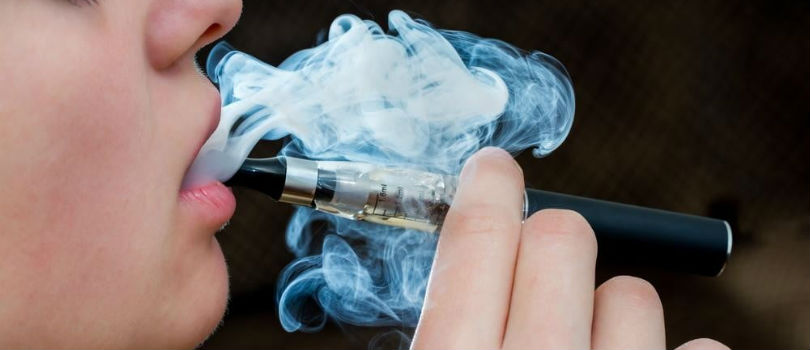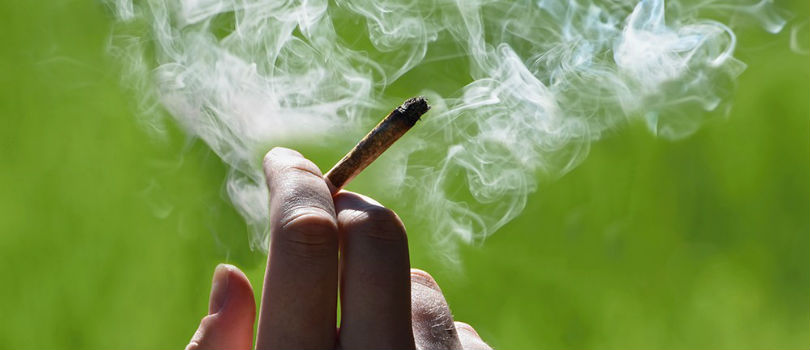Marijuana Allergies and How They Develop
Alongside increased cannabis exposure, cannabis allergies are on the rise, with symptoms ranging from mild to life-threatening. Cannabis has been widely embraced in recent years for its impressive array of medicinal properties. But for some people, weed can do more harm than good. As marijuana use becomes more commonplace in the United States (and several other countries), reports of allergic reactions to marijuana are also increasing.
Cannabis has been widely embraced in recent years for its impressive array of medicinal properties. But for some people, weed can do more harm than good. As marijuana use becomes more commonplace in the United States (and several other countries), reports of allergic reactions to marijuana are also increasing.
Marijuana allergy
There isn’t enough data yet to estimate how many people are allergic to marijuana. Since weed is still illegal in many places, the actual incidence of marijuana allergy is likely to be underreported. Weed’s illegal status has also made it difficult for researchers to obtain approval and resources to study cannabis allergies. However, many allergists have anecdotally reported recent increases in reported cases of weed-related allergy, and expect this trend to continue.
How marijuana allergies develop
An allergy to anything can develop only after your body is exposed to that particular substance. The more frequently you are exposed to something, the higher the risk of becoming “sensitized” to it. Sometimes, this increased sensitivity turns into a full-blown allergy. Scientists still haven’t figured out what causes some sensitivities to escalate into allergies. But it is clear that the more people are exposed to a potential allergen, the more people will develop an allergy to it.
Marijuana allergies, in particular, are rising due to the increased prevalence of weed in society. As it has become more socially and legally acceptable, more people are using cannabis, recreationally as well as medicinally. Even among people who do not use weed, exposure to both secondhand marijuana smoke and airborne cannabis pollen has increased. Physical handling of the marijuana plant has also increased, due to an entire industry rising up around its newly-approved medicinal and recreational use.

Marijuana allergies are rising due to the increased prevalence of weed in society.
Can you be allergic to weed?
It is possible to be allergic to weed, and a growing number of people are being diagnosed with cannabis allergy. A common strain of weed known as cannabis sativa appears to be responsible for most current cases of marijuana allergy. In areas where cannabis sativa is commercially grown, such as Italy, Spain, and the U.S. state of Nebraska, there is a significant amount of marijuana pollen released into the air. Exposure to any type of plant pollen can cause allergic reactions, and cannabis pollen is no different. As agricultural production of cannabis expands, we can expect to see an increase in sensitization and allergy in the regions where it is cultivated.
Q: Can you be allergic to weed?
A: Yes, it is possible to be allergic to weed in any of its forms. Inhaling pollen or smoke (including secondhand smoke), direct skin contact, and ingestion of cannabis can cause allergic reactions ranging from mild irritation to anaphylaxis.
Allergic reactions to contaminated weed
It is also possible to experience an allergic reaction following cannabis use due to contamination by other substances, not the cannabis itself. Various strains of mold can start growing on older or poorly stored weed. Dust mites can also infiltrate your stash. Both mold and dust mites are very common allergens, and smoking or ingesting either of them may cause irritation of the eyes, nose, and throat.
Symptoms of marijuana allergy
Marijuana allergy symptoms typically come on very quickly after exposure, but it is possible for the onset of symptoms to be delayed up to an hour. Cannabis allergy symptoms tend to vary depending on the type of exposure (inhalation, skin contact, or ingestion). In most cases, the amount of weed someone is exposed to will affect how mild or severe their allergic reaction is.
Allergy to airborne cannabis
The symptoms of an allergic reaction to inhaled cannabis are typically similar to the seasonal allergy (“hay fever”) symptoms that many people experience every spring: coughing, sneezing, congestion, runny nose, sore throat, itchy or watery eyes, stomach cramps, or nausea. Asthma can also be aggravated or induced by exposure to airborne cannabis.
In addition to smoking cannabis, airborne exposure to it can occur via secondhand smoke or pollen from agricultural cannabis production. As the legal environment surrounding weed in the United States and several other countries continues to become more friendly, we can expect to see a greater incidence of all three of these exposure factors.
Contact dermatitis
Contact dermatitis is an allergic reaction that can be caused by touching cannabis. Contact dermatitis may result in red, itchy, or inflamed skin, hives, blisters, or excessively dry skin. People employed by the quickly-growing cannabis industry, scientists and researchers, law enforcement officers, and marijuana users are all susceptible to developing contact dermatitis from repeated handling of cannabis.
Q: What are weed’s allergy symptoms?
A: Rashes and other skin irritations may occur from touching cannabis, while inhaled cannabis (smoke or pollen) tends to provoke symptoms in line with seasonal pollen allergies (“hay fever”): coughing, sneezing, runny nose, irritated or watery eyes, nausea, sore throat, and difficulty breathing. Ingestion of cannabis, particularly hemp seeds, may cause some of the above symptoms but also appears to carry an increased risk of anaphylaxis.

Contact dermatitis may result in red, itchy, or inflamed skin, hives, blisters, or excessively dry skin.
Marijuana allergy risks
Cross-reactivity
It’s possible that being allergic to cannabis could also cause you to develop allergies to other plants with similar proteins, a phenomenon known as cross-reactivity. Foods that are frequently cross-reactive with marijuana include almonds, apples, bananas, chestnuts, eggplant, grapefruit, peaches, and tomatoes.
People who are already sensitive or allergic to one or more of these foods may be at higher risk for developing a marijuana allergy. Existing research has suggested a higher risk of marijuana allergy in people who are already sensitive to tomatoes, in particular. Research suggests that marijuana users are also more likely to be sensitized to a number of other plant pollens and even animal dander.
Anaphylaxis
The most serious risk associated with marijuana allergy is anaphylaxis. This is a severe allergic reaction to even a tiny amount of exposure to an allergen. Anaphylaxis can occur within minutes or even seconds following exposure and can result in coma or death. Signs that someone may be having an anaphylactic reaction include swelling of the throat to the point that breathing is compromised, fainting, red and itchy (or pale) skin, low blood pressure, dizziness, vomiting, and fainting.
The increasing legal and social acceptance of weed does pose a serious potential risk to people who are at risk of anaphylaxis from marijuana allergy. It’s safe to assume you’ll catch a whiff or two of weed at outdoor concerts and festivals, and perhaps parties at certain friends’ homes. If your weed allergy is severe, you can simply elect to skip these types of events. But, as recreational weed becomes legal in more places, it may become very difficult to prevent occasional unexpected exposure. Always keeping an Epi-pen on hand for emergencies may be a necessary measure in these cases. If you suspect that you may have a severe marijuana allergy, consult a medical professional to learn how to best protect yourself.
However, it does appear that allergies to inhaled cannabis are rarely severe enough to be life-threatening (though flare-ups may be highly unpleasant). Ingestion of cannabis – particularly of hemp seeds – is the most likely trigger for anaphylactic reactions. Fortunately, it is also one of the easiest to avoid, but paying close attention to ingredient labels is a must, as hemp is added to many food and drink products.

allergies to inhaled cannabis are rarely severe enough to be life-threatening.
How is marijuana allergy diagnosed?
There are two non-invasive methods that are used to test for marijuana allergy – skin tests and blood tests.
Skin test
Skin tests are the quickest and least expensive way to test for marijuana allergy. Skin tests are considered most reliable when testing for airborne substances, such as marijuana pollen. A diluted cannabis solution is either injected just below the skin or topically applied to a small patch of skin, typically on the arm or the back. If the site of the application/injection becomes irritated, itchy, bumpy, or inflamed, within 15 minutes, it’s a likely indication of cannabis allergy.
Skin tests are generally considered a safe procedure, even for infants, but there are a few health conditions that they are incompatible with. Certain medications (including antihistamines, heartburn medications, and many antidepressants) can throw off your test results. If a skin condition that makes the skin already appear red or irritated, such as eczema or psoriasis, is present in the area of application, or if anaphylaxis is a risk, a skin test cannot be used. In places where marijuana is still illegal, obtaining the extract to use in skin testing may not be possible.
Blood test
Blood tests have the benefit of not requiring causation of symptoms to confirm a marijuana allergy, and they are a safe and legal alternative for people who cannot take a skin allergy test. But blood tests are more expensive and less sensitive than skin tests, and it does take at least a few days to get your test results back. In a blood allergy test, a sample of your blood is drawn and the presence of antibodies to marijuana is assessed. If your blood shows a higher than normal amount of marijuana antibodies, it’s likely that you are allergic to weed.
How is marijuana allergy treated?
Unfortunately, there is no pharmaceutical treatment currently available for non-anaphylactic cannabis allergies. Epi-pens are often recommended as an emergency treatment for anaphylaxis. However, it is important that you consult a medical professional about treatment options if you suspect that you have a severe cannabis allergy. Abstinence from and avoidance of cannabis exposure are the only currently recommended ways to prevent allergic reactions to cannabis. There simply hasn’t been enough research conducted on marijuana allergies yet to discern a medical solution.
Q: How is marijuana allergy treated?
A: No medical treatment for non-anaphylactic marijuana allergy has been discovered or approved at this time, due to limited research on this condition. Abstinence from cannabis, avoidance of exposure to it, and using an Epi-pen for anaphylaxis ( consult a physician to verify if this is the right option for you, if you are at risk) are the only currently recommended preventative measures.

It is important that you consult a medical professional about treatment options if you suspect that you have a severe cannabis allergy.
Long-term users can develop intolerance to marijuana
In recent years, a condition known as cannabinoid hyperemesis syndrome (CHS) has come to light. Research on CHS is still relatively limited, and its exact cause is still unknown. It appears that the accumulation of cannabinoids (chemical compounds found in weed) in the body may be what causes CHs to develop. The effects of certain cannabinoids on internal temperature regulation may also be a factor.
Symptoms of CHS
CHS is characterized by excessive nausea, vomiting (hyperemesis), and abdominal pain or cramps. This condition is contradictory to cannabis’ well-known ability to act as a suppressant of nausea and vomiting. In severe CHS cases, persistent vomiting coupled with hot showers – an often-used coping strategy for nausea – can damage the kidneys and lead to cannabinoid hyperemeisis acute renal failure (CHARF).
CHS appears to follow a three-phase pattern. In the first (prodromal) phase, which can last for months or even years, symptoms are mild – typically only consisting of nausea upon waking that is easily relieved by a hot shower or bath. Many people increase their cannabis use to relieve their nausea, never suspecting it of making their condition worse.
The second phase is full-blown CHS, in which vomiting may be so frequent that patients begin to fear or avoid eating altogether, and nausea is severe and persistent. CHS patients often compulsively take hot baths or showers, as it’s the only thing that consistently provides relief. This can, alongside vomiting, lead to severe dehydration and the potential development of CHARF. In this second phase, medical attention becomes necessary.
The third phase (usually lasting about 7-10 days) is recovery, which requires abstinence from marijuana and its cannabinoids as the body heals and returns to normal. It does appear that re-introducing cannabinoids after recovery will cause a relapse of CHS symptoms.

CHS is characterized by excessive nausea, vomiting (hyperemesis), and abdominal pain or cramps.
CBD allergies
At this time, there is no evidence of CBD (cannabidiol) in and of itself being an allergen. In low doses, CBD is often used to relieve nausea and vomiting. However, in large amounts, this cannabinoid may play a role in the excessive vomiting that is characteristic of CHS. Many high-CBD cannabis-derived products are currently marketed as “CBD,” and it’s important to note that other components of the cannabis plant may be present in these products, and could cause allergic reactions.
Can you be allergic to CBD oil?
If you experience an allergic reaction to CBD oil, current research says it’s unlikely that the CBD itself is the cause. Other cannabis proteins or enzymes in the oil are more likely culprits. If you experience vomiting as a side effect of using CBD oil, however, you may want to speak with a medical professional about the possibility of CHS.
Q: Can you be allergic to CBD?
A: There is no evidence that CBD is an allergen, though high levels of it may contribute to Cannabinoid Hyperemesis Syndrome. Products marketed as “CBD” may also contain other cannabis chemical compounds and provoke an allergic reaction in some users.
THC allergy
THC (tetrahydrocannabinol) could potentially be responsible for some marijuana allergy symptoms. However, there isn’t enough evidence to say for sure how big of a role THC may play in cannabis allergies, or if THC itself can be classified as an allergen.
Can you be allergic to THC?
THC can be easily stored in our body fat. This can be problematic if a person is suffering from acute stress, food deprivation, or ketosis – a stage of rapid fat metabolization often achieved through adherence to a low-carbohydrate diet. Under these circumstances, the body begins to use its fat stores for energy. The stored THC is released back into the bloodstream as the fat is “burned.”
Typically, THC leeching out of our fat stores and back into the bloodstream is gradual and doesn’t appear to cause an adverse reaction. However, in some cases, particularly in people who have been longtime heavy cannabis users, a re-intoxication effect can occur, in which the level of THC in the bloodstream rises to dangerously high levels. This phenomenon may be a significant factor in the development of CHS. People with CHS do appear to lose their ability to comfortably or safely use marijuana.
Q: Can you be allergic to THC?
A: It is still unknown if you can be allergic to THC, but it does appear that THC plays a role in a condition called Cannabinoid Hyperemesis Syndrome (CHS). CHS develops as a result of long-term marijuana use and appears to leave users unable to tolerate cannabis without experiencing adverse reactions.

There isn’t enough evidence to say for sure how big of a role THC may play in cannabis allergies.
Hemp allergy
There have been a few reported cases of severe allergic reactions to hemp (also known as industrial hemp). Hemp is a strain of the cannabis sativa plant that is bred to be low in THC. Hemp’s fibers are used in the manufacture of paper, textiles, and rope, among other things. Hemp seeds or “hemp hearts” as they are often called, are edible and rich in protein. However, it is these proteins that some people are allergic to. There have been at least 5 reported cases of anaphylactic reactions to ingestion of hemp seeds.
Hemp seeds are found in a growing number of foods, particularly those marketed in the “health-food” section. Hemp seeds are also commonly used in fishing bait and birdseed, so people with hemp allergies should use caution and review ingredient lists carefully when handling these types of products.
Hemp allergy symptoms
Anaphylaxis is, of course, the most concerning hemp allergy symptom. But symptoms of contact dermatitis or pollen allergy can also develop upon contact with or inhalation of industrial hemp. There have been reports of factory workers routinely exposed to airborne hemp dust developing chronic respiratory problems.
More research is needed to understand marijuana allergy
Much more research is needed to fully understand what causes some people to become allergic to marijuana, and how to treat or prevent these allergies. This need is particularly important as rates of marijuana exposure continue to increase, and along with them, cases of marijuana allergy.

Super article, thank you. I’ve definitely experienced hayfever like symptoms almost every time I smoke and it’s very uncomfortable, a real dampener on the high and it also often makes me feel somewhat hungover in the morning due to being congested etc. I’ve been actively decreasing my usage (both in terms of how much I smoke in a session and how frequently I smoke) and feeling much better for it. I’ve also noticed what foods I’ve been eating recently or what I eat when I get the munchies can cause the flare ups to be less or more severe. I… Read more »
I have developed a serious cannabis allergy. I have a Medical Marijuana card in my State and was vaping or smoking on a regular basis as well as applying the “RSO” to my skin. I believed I was protecting myself from skin cancer. However, over a few weeks the rash which I was applying the oil to spread from my ankle to the bottom part of my leg and other parts of my body. My dermatologist didn’t have a clue and diagnosed it as skin damage and skin cancer. Two biopsies were taken and the lab report said I had… Read more »
good read. i have developed a THC allergy im assuming. I have been on a low carb diet for the better part of 1 year and a couple months. Im a every day , thru-out the day user. but only in small doses (2 hits every 1-2 hours). But recently began to have cold like symptoms which i though was a cold, however stomach tightness, and chest tightness which led to a panic/anexity attack like breathing told me otherwise. i stopped using for 1 day , and tried to smoke 1 hit , and couldnt do it. symptoms returned ,… Read more »
I smoked Marijuana for about a year or so without any problem. Then just a month ago, I started having rashes(on the sides of my neck), eyes watering, sneezing. I have no idea why. Has anyone have the same problem?